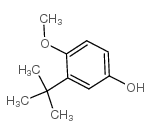In vivo depigmentation by hydroxybenzene derivatives.
J M Menter, A A Etemadi, W Chapman, T D Hollins, I Willis
Index: Melanoma Res. 3(6) , 443-9, (1993)
Full Text: HTML
Abstract
Certain mono- and dihydroxybenzene derivatives are selectively cytotoxic for melanocytes in vivo, and can cause depigmentation of skin and hair. We produced selective melanocytotoxicity/hair depigmentation in C57Bl mice by injection of 0.032-1.0% p-t-butylcatechol (tBC) or p-hydroxyanisole (MMEH) in physiological saline. No depigmentation occurred on injection of 3,4-dihydroxyphenylalanine (DOPA) or 3,4-dihydroxyphenylacetic acid (DOPAC). Light- and electron-microscopic examination of biopsy specimens taken from depigmented areas indicates selective melanocyte damage as early as 2 h post-injection. Melanocytes from anagen hair are most susceptible to depigmentation. All four compounds are substrates for tyrosinase, but only tBC and MMEH generate their respective isolable 1,2-benzoquinones, tBCQ and MMEHQ. These caused depigmentation in C57Bl mice to a comparable degree to the parent compounds. DOPA- and DOPAC-quinones (DOPAQ and DOPACQ) are not spectroscopically detectable in solution, suggesting extremely low steady-state levels of these compounds. The net observed rate of reaction of the respective 1,2-quinone with 300 microM bovine serum albumin (BSA) in vitro varies widely, with tBCQ >> MMEHQ = DOPACQ >> DOPAQ. The results are consistent with a mechanism involving attack of -SH on melanosomal proteins and/or enzymes by tyrosinase-generated 1,2-quinones. This mechanism evidently differs from that involved in in vitro hydroxybenzene melanocytotoxicity of melanoma cells, in which active oxygen intermediates generated by hydroxybenzene autoxidation play a significant role. The most reliable prognosticator of in vivo depigmentation appears to be the ability of the depigmenter to form a spectroscopically stable 1,2-quinone which is capable of reacting with protein -SH.
Related Compounds
| Structure | Name/CAS No. | Molecular Formula | Articles |
|---|---|---|---|
 |
TBMP
CAS:88-32-4 |
C11H16O2 |
|
Modulation by dietary factors of BHA-induced alterations in ...
1991-02-01 [Food Chem. Toxicol. 29(2) , 79-85, (1991)] |
|
Antioxidant properties of melatonin: a pulse radiolysis stud...
1999-03-01 [Free Radic. Biol. Med. 26(5-6) , 557-65, (1999)] |
|
Chemoprevention of cancer: phenolic antioxidants (BHT, BHA).
1988-01-01 [Int. J. Biochem. 20(7) , 639-51, (1988)] |
|
p38 mitogen-activated protein kinase negatively regulates th...
2000-01-28 [J. Biol. Chem. 275(4) , 2322-7, (2000)] |
|
Metabolism of 2- and 3-tert-butyl-4-hydroxyanisole (2- and 3...
1987-02-01 [Toxicology 43(2) , 139-47, (1987)] |